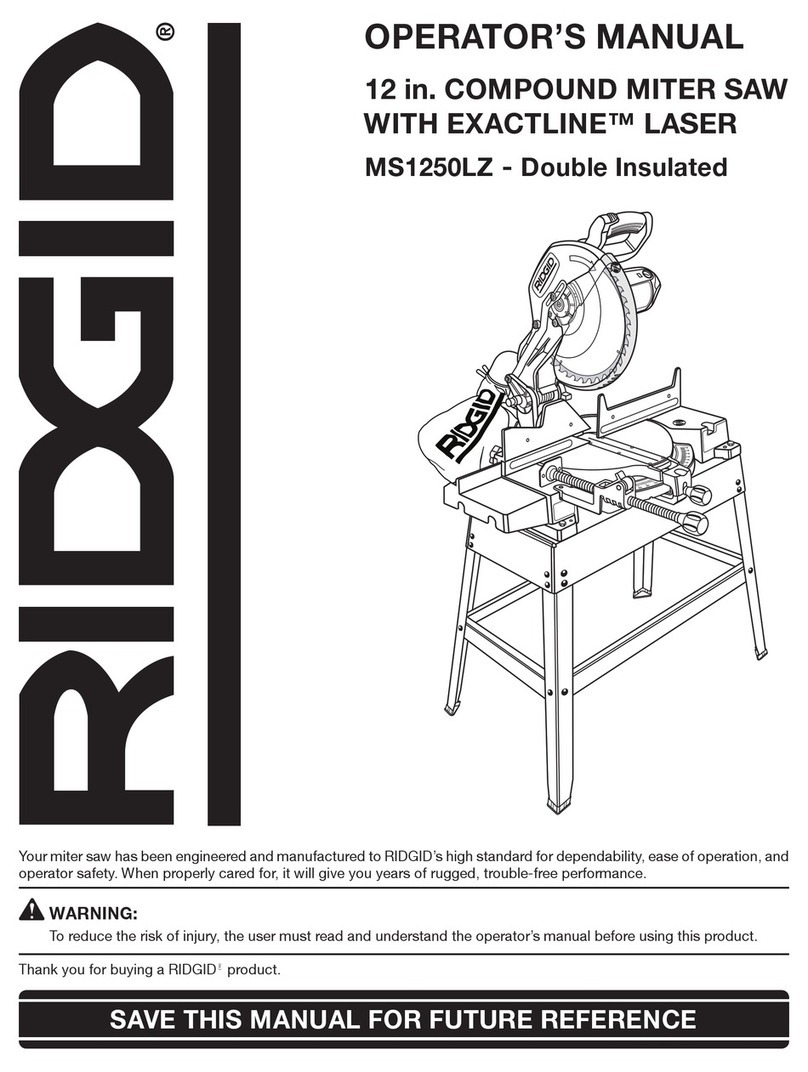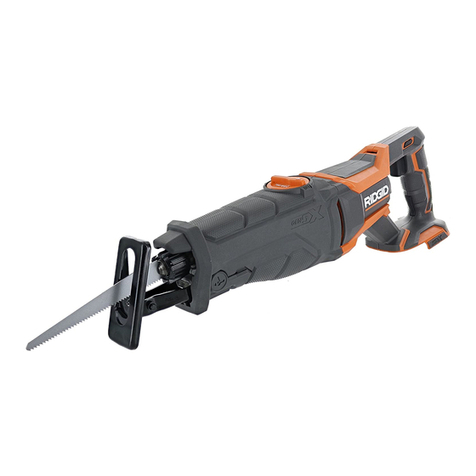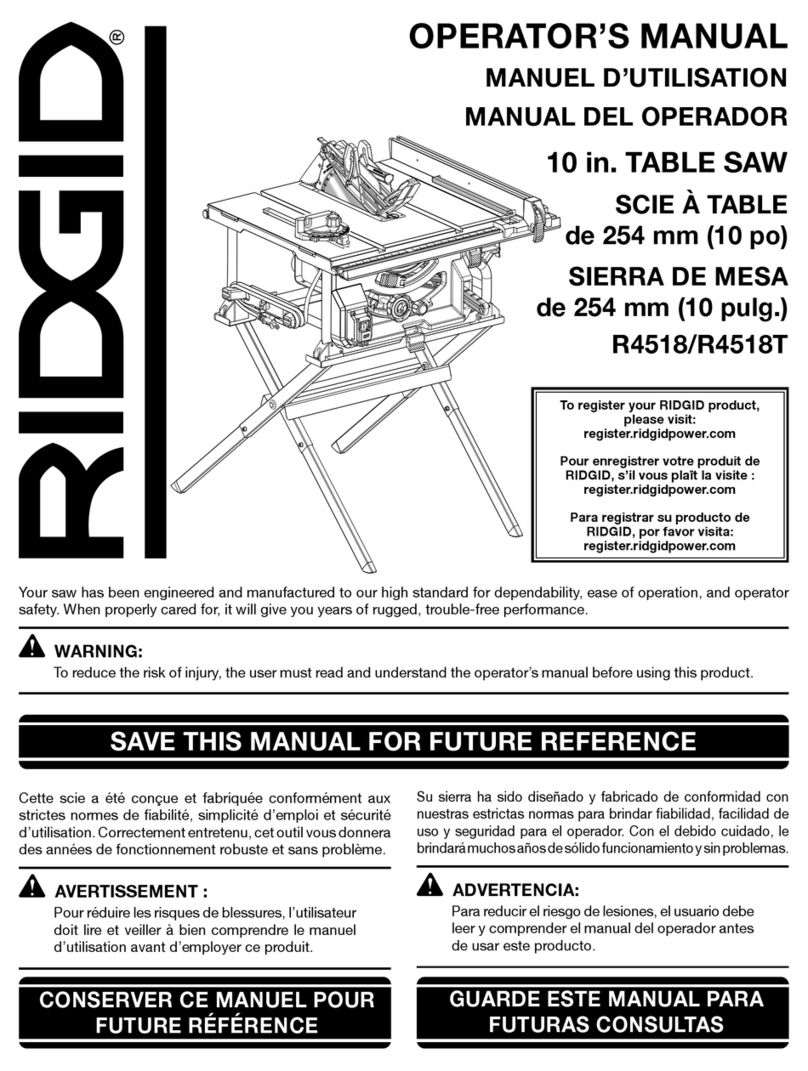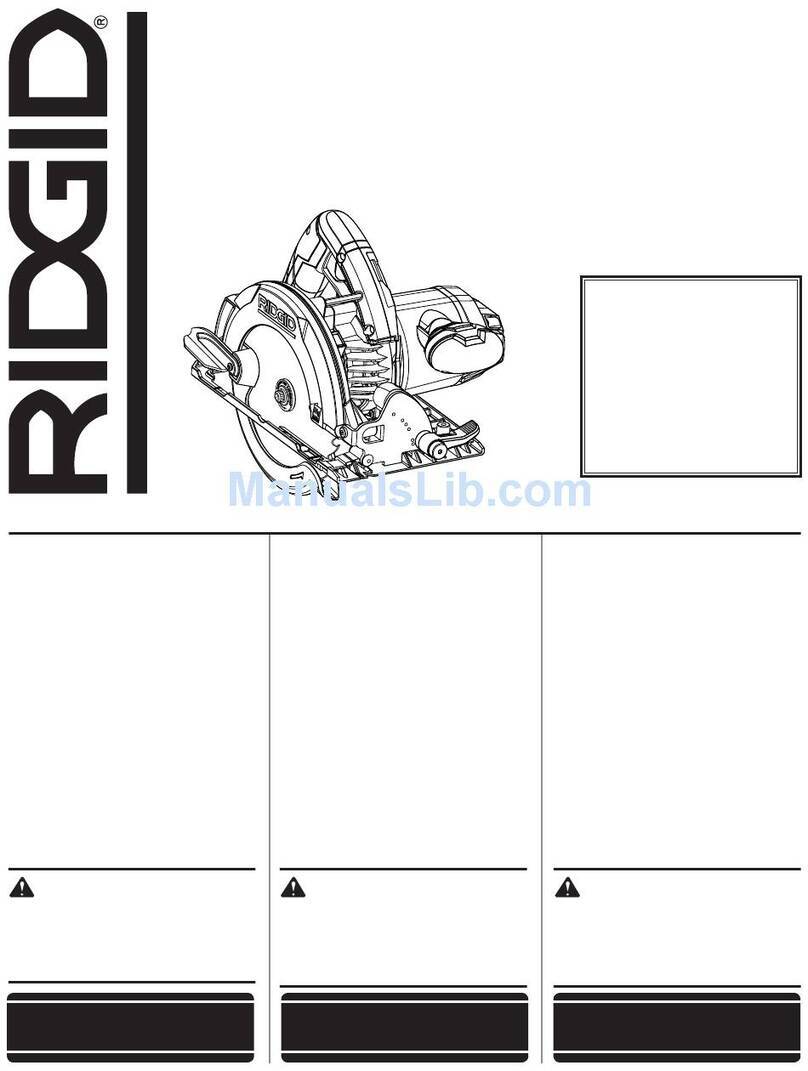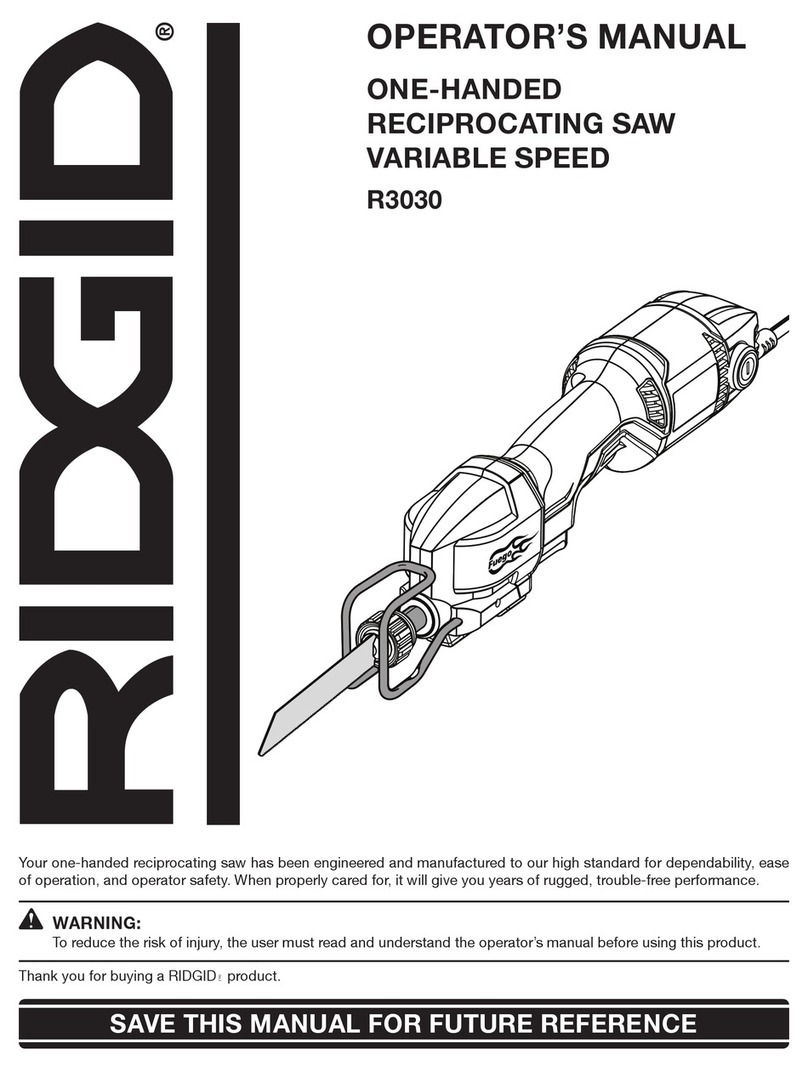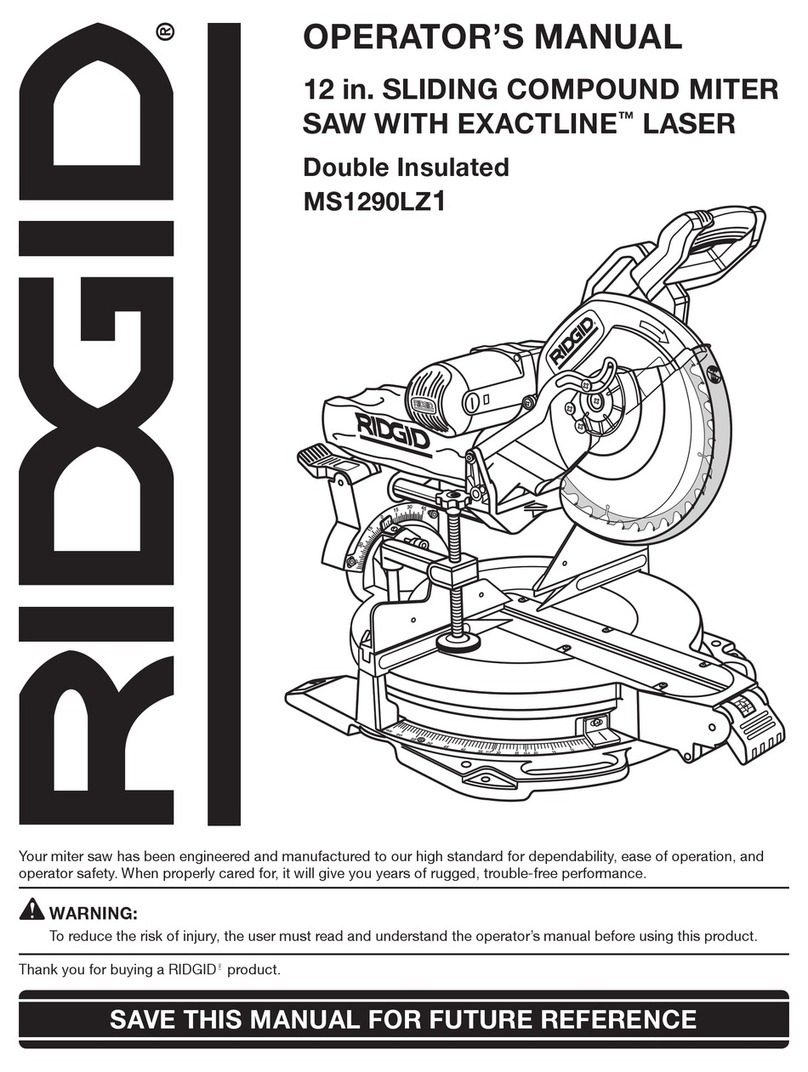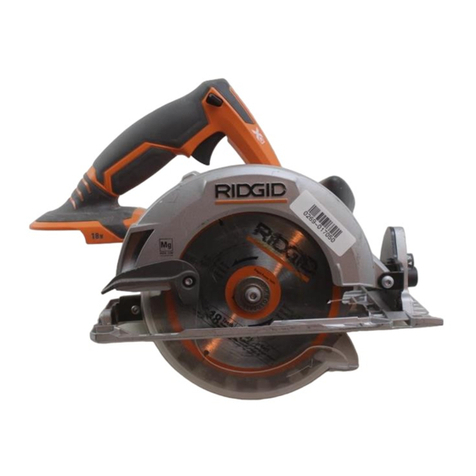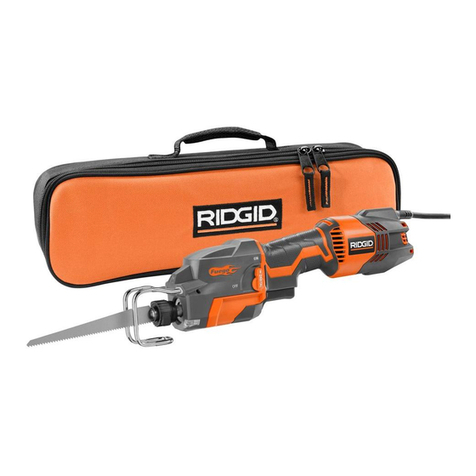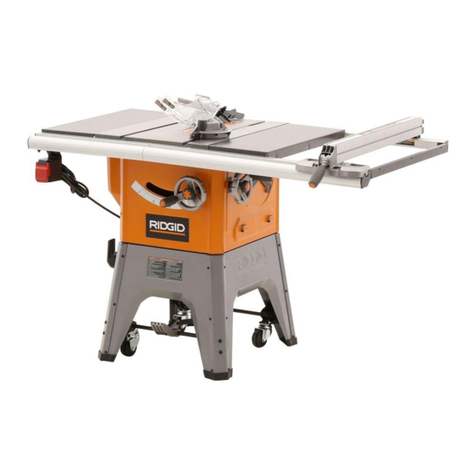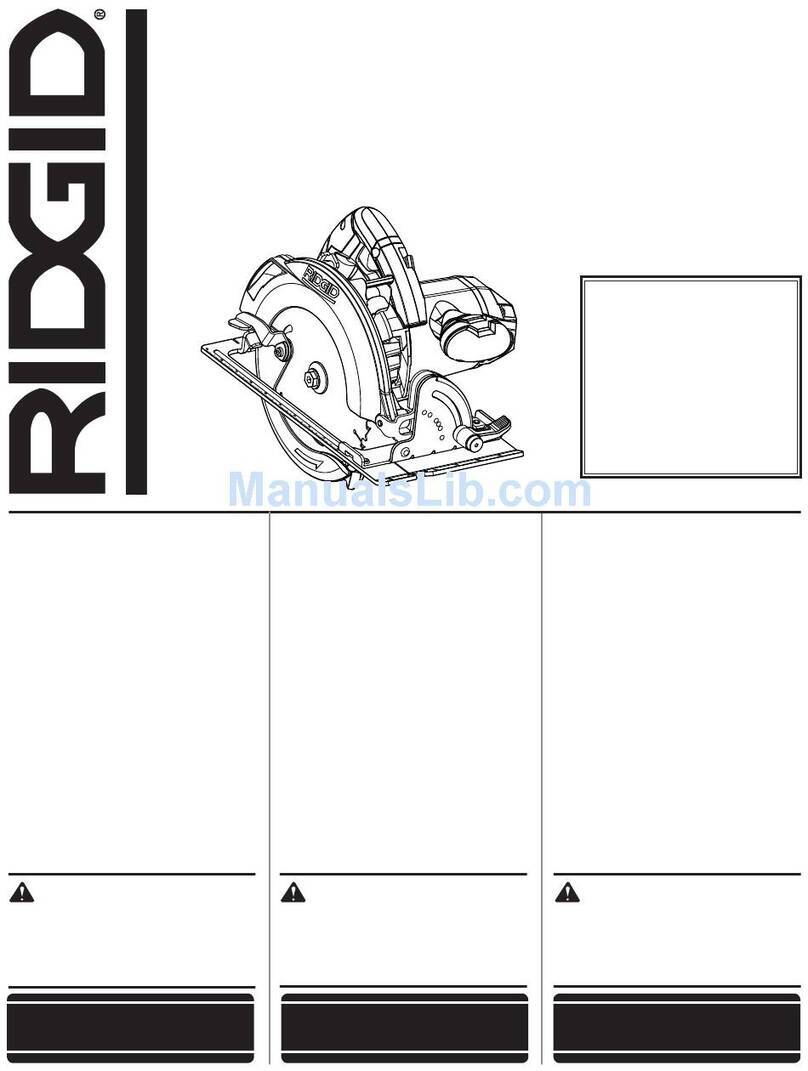
•Do not abuse the cord. Never use the
cord for carrying, pulling or unplugging
the power tool. Keep cord away from
heat, oil, sharp edges or moving parts.
Damaged or entangled cords increase the
risk of electric shock.
•When operating a power tool outdoors,
use an extension cord suitable for out-
door use. Use of a cord suitable for outdoor
use reduces the risk of electric shock.
•If operating a power tool in a damp loca-
tion is unavoidable, use a Ground Fault
Circuit Interrupter (GFCI) protected sup-
ply. Use of a FCI reduces the risk of elec-
tric shock.
Personal afety
•Stay alert, watch what you are doing and
use common sense when operating a
power tool. Do not use a power tool while
you are tired or under the influence of
drugs, alcohol, or medication. A moment of
inattention while operating power tools may
result in serious personal injury.
•Use personal protective equipment. Al-
ways wear eye protection. Protective equip-
ment such as a dust mask, non-skid safety
shoes, hard hat, or hearing protection used
for appropriate conditions will reduce per-
sonal injuries.
•Prevent unintentional starting. Ensure the
switch is in the off-position before con-
necting to power source and/or battery
pack, picking up or carrying the tool. Car-
rying power tools with your finger on the
switch or energizing power tools that have
the switch ON invites accidents.
•Remove any adjusting key or wrench be-
fore turning the power tool ON. A wrench
or a key left attached to a rotating part of the
power tool may result in personal injury..
•Do not overreach. Keep proper footing
and balance at all times. This enables bet-
ter control of the power tool in unexpected sit-
uations.
•Dress properly. Do not wear loose cloth-
ing or jewelry. Keep your hair and clothing
away from moving parts. Loose clothes,
jewelry, or long hair can be caught in moving
parts.
•If devices are provided for the connection
of dust extraction and collection facilities,
ensure these are connected and properly
used. Use of dust collection can reduce dust-
related hazards
•Do not let familiarity gained from frequent
use of tools allow you to become compla-
cent and ignore tool safety principles. A
careless action can cause severe injury
within a fraction of a second.
Power Tool Use And Care
•Do not force the power tool. Use the cor-
rect power tool for your application. The
correct power tool will do the job better and
safer at the rate for which it is designed.
•Do not use power tool if the switch does
not turn it ON and OFF. Any power tool that
cannot be controlled with the switch is dan-
gerous and must be repaired.
•Disconnect the plug from the power
source and/or the battery pack from the
power tool before making any adjust-
ments, changing accessories, or storing
power tools. Such preventive safety meas-
ures reduce the risk of starting the power tool
accidentally.
•Store idle power tools out of the reach of
children and do not allow persons unfa-
miliar with the power tool or these in-
structions to operate the power tool.
Power tools are dangerous in the hands of
untrained users.
•Maintain power tools and accessories.
Check for misalignment or binding of
moving parts, breakage of parts and any
other condition that may affect the power
tool’s operation. If damaged, have the
power tool repaired before use. Many ac-
cidents are caused by poorly maintained
power tools.
•Keep cutting tools sharp and clean. Prop-
erly maintained cutting tools with sharp cut-
ting edges are less likely to bind and are
easier to control.
•Use the power tool, accessories and tool
bits etc. in accordance with these instruc-
tions, taking into account the working
conditions and the work to be performed.
The use of the power tool for operations dif-
ferent from those intended could result in a
hazardous situation.
•Keep handles and grasping surfaces dry,
clean and free from oil and grease. Slip-
999-995-148.08_REV. B3
RS-570 Reciprocating Saw
